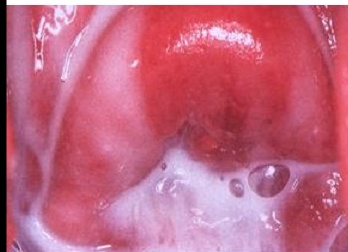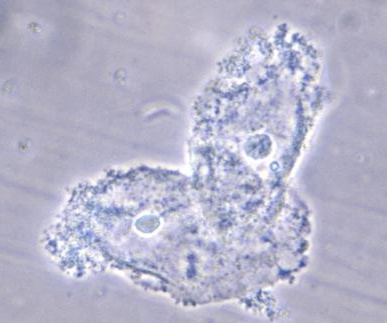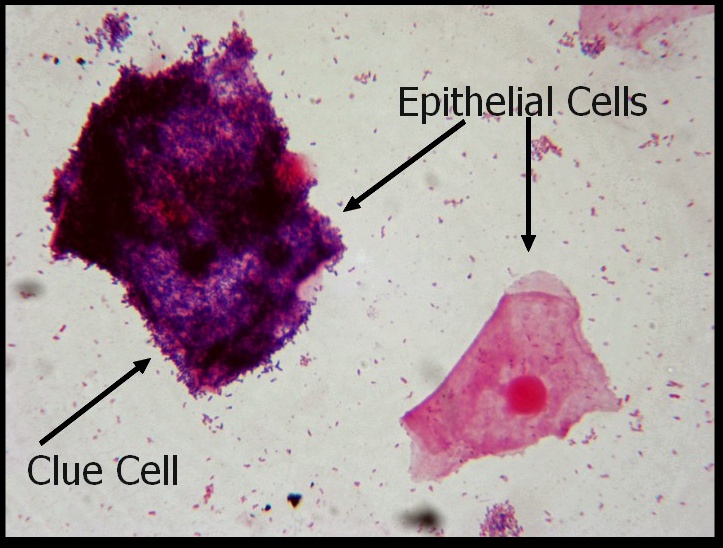Gardnerella vaginalis
Pleomorphic, gram-variable bacillus that causes bacterial vaginosis (infection of vagina by bacteria).
Gram variable stain: pink and purple on wall

Alterations in natural vaginal flora such as sexual activity may lead to the proliferation and overgrowth of G. vaginalis, leading to bacterial vaginosis. However, bacterial vaginosis is not a sexually-transmitted infection.
- normally maintained by lactobacillus at 4.0-4.5
Bacterial overgrowth disrupts normal flora:

Risks for changing flora
- Recent antibiotic use
- Decreased estrogen production
- New sexual partner
- Douching
- Common in pregnant women
Women with bacterial vaginosis are mainly asymptomatic. Symptomatic women typically present with off-white, thin, and homogenous vaginal dischargeand/or fishy vaginal odor.
- pregnant women at risk of spontaneous abortion (Foster)
 Fishy smell, thin white on vulva:
Fishy smell, thin white on vulva:

Diagnosis of bacterial vaginosis is made based on the presence of at least three of the following four criteria:
- Homogenous, thin, grayish-white discharge that smoothly coats the vaginal walls
- Vaginal pH greater than 4.5
- Positive whiff-amine test, which is characterized by the presence of fishy odor when KOH is added to a sample of vaginal discharge
Dog: KOH whiff

Clue cells on saline wet mount
Clue cells:


Clue

Treatment for bacterial vaginosis includes metronidazole or clindamycin.
